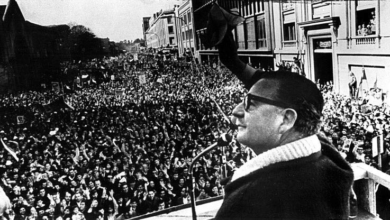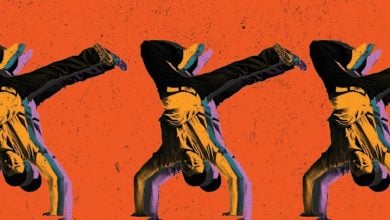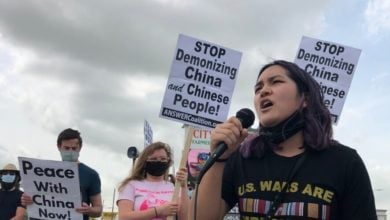Photo: Mikhail Gorbachev with Ronald Reagan during a visit to Reagan’s ranch on May 2, 1992 — just five months after the dissolution of the Soviet Union. Public domain.
Mikhail Gorbachev, the last leader of the Union of Soviet Socialist Republics whose policies led to the devastating collapse of his country and the global socialist camp, died on August 30, 2022.
Gorbachev’s reign, which lasted from 1985 to 1991, ended with the restoration of capitalism in the USSR, the withdrawal of vital aid to and trade with countries and movements fighting imperialism worldwide, the breakup of the Soviet state into 15 separate countries, and the opening of them to unprecedented exploitation and corruption. Essential social rights to employment, housing, health care, education, maternal leave and more disappeared virtually overnight.
Even as he was aspiring to the office of General Secretary of the Communist Party of the Soviet Union, the West was taking note. After they met in London in 1984, Gorbachev was complemented by Margaret Thatcher, the ultra-reactionary British prime minister, who said, “we like him … we can do business together.”
President Ronald Reagan, who infamously labeled the Soviet Union “the evil empire,” at the same time joined in the courting of Gorbachev, who always appeared ready for the embrace of even the most ardent anti-communists.
In 1990, he was rewarded with the Nobel Peace Prize for “ending the Cold War” by surrendering to imperialist demands and dismantling the European socialist bloc. A few years later he would be granted space for his foundation on the grounds of the Presidio former army base in San Francisco.
Perestroika and Glasnost
While Soviet economic growth had slowed to 2% annually when Gorbachev took over, it was not suffering from either unemployment or inflation. In the late 1980s, that all changed dramatically.
Gorbachev’s economic reforms known as “perestroika” were intended to use market competition as a way to end or radically diminish the Soviet government’s obligations to the working class. Market forces rather than the enshrined legal rights of the working class would determine employment patterns.
This section of the Soviet bureaucracy represented by Gorbachev identified socialist property relations and the Soviet Union’s isolation from the world economy as the central obstacles impeding the country from sharing in the fruits of the revolution in technology that was sweeping the world in the last quarter of the 20th century. Gorbachev and the Soviet “reformers” believed that only by ending the Cold War and liquidating centralized economic planning would U.S. imperialism accept the Soviet Union’s entry into the rapidly accelerating model of a global economy.
Instead, the reforms set forces into motion inside and outside of the Soviet Communist Party who were completely bourgeois and pro-imperialist in their orientation. The pre-existing Soviet political system had driven them underground or into the Communist Party itself. Unchecked, the reforms led to runaway inflation and extreme economic dislocation.
Along with perestroika, Gorbachev and his supporters in the CPSU leadership promoted “glasnost,” the Russian word for openness. It was accompanied by a purge of communists and their replacement with anti-communist and pro-capitalist elements, especially in the mass media. An internal culture war against the USSR and communism raged, leading to the disorientation of large parts of the party and general population who looked to the CPSU and other state institutions for guidance.
Policies reducing assistance to the less-developed republics and the promotion of anti-communist elements led to the resurgence of national conflicts in many areas.
A most undemocratic end
In the midst of spreading economic and political chaos, the government called for a referendum on whether or not to maintain the Soviet Union in March 1991. The most reactionary forces, led by a former top leader of the Communist Party Boris Yeltsin, hoped that the referendum would advance the cause of breaking up the USSR. But instead, more than 70% of the vote supported retaining the USSR.
In August 1991, an attempt was made by communists in the party leadership to halt the disintegration and retain the socialist system, but was defeated. Gorbachev then resigned, ceding power to Yeltsin who immediately declared the CPSU illegal.
Despite the overwhelming support to retain the USSR, in December 1991, the leaders of Russia, Ukraine and Belarus met secretly and declared that the union would be dissolved on December 25, 1991.
What followed the end of the Soviet Union was a prolonged period of indescribable suffering for the great majority of a population that had long been accustomed to having their basic needs met. Unemployment, unheard of in the Soviet Union until 1990, skyrocketed to 10 percent by 1995. The poverty rate was near 20 percent in 2004, according to World Bank figures. The real purchasing power provided by the Russian minimum wage sunk dramatically, as Yeltsin dismantled longstanding price controls on basic goods. By 1997, the real average income of working-class families was 25 to 30 percent of what it was in 1990. That year, a UN agency announced that 100 million people had sunk below the poverty line in Russia.
Between 1990 and 1994, the country’s death rate increased an astounding 40 percent. Male life expectancy fell from 63.8 years to 57.7, and among women, from 74.3 years to 71.3 — a phenomenon unprecedented during peacetime in modern history.
The sell-off of the resources and property that belonged to the people at fire sale prices created a tiny class of super-rich capitalists.
Gorbachev is being fondly remembered by the global elite, but in his homeland it’s a different story. In the 1996 presidential election, he received less than 1% of the vote and was reviled wherever he campaigned.






